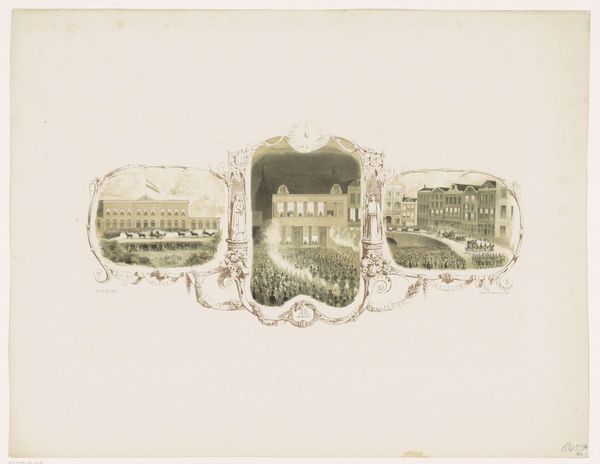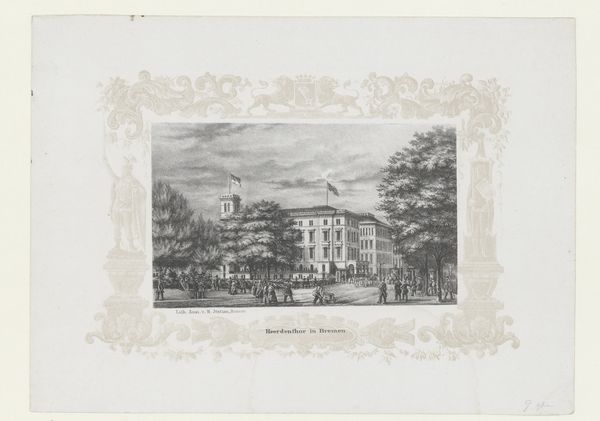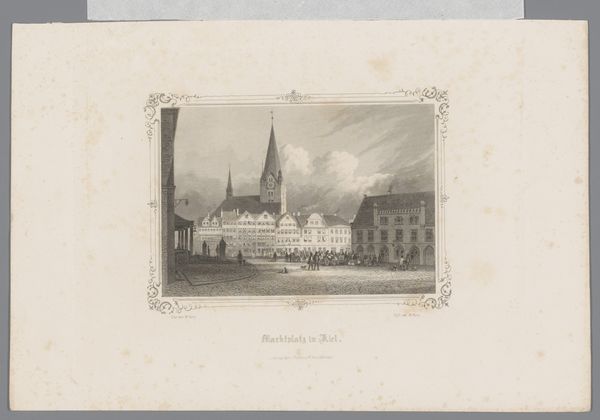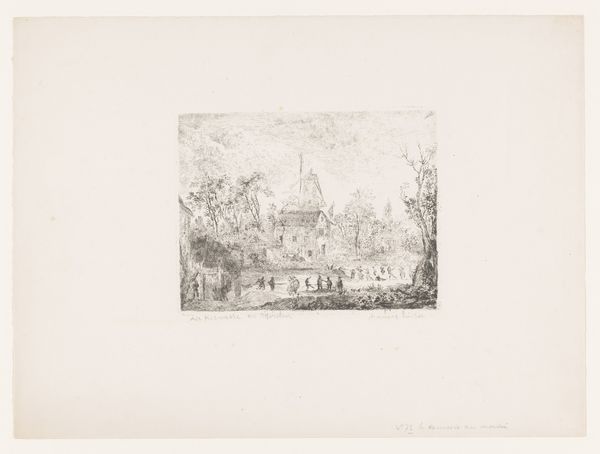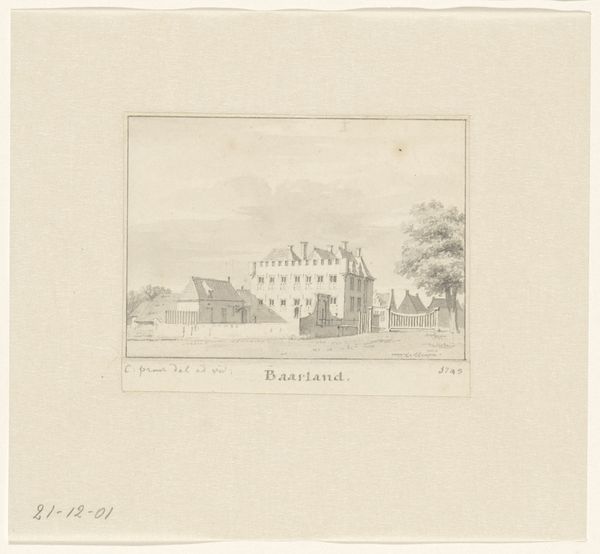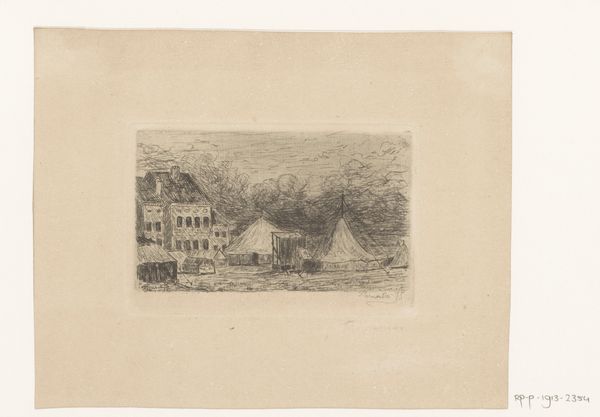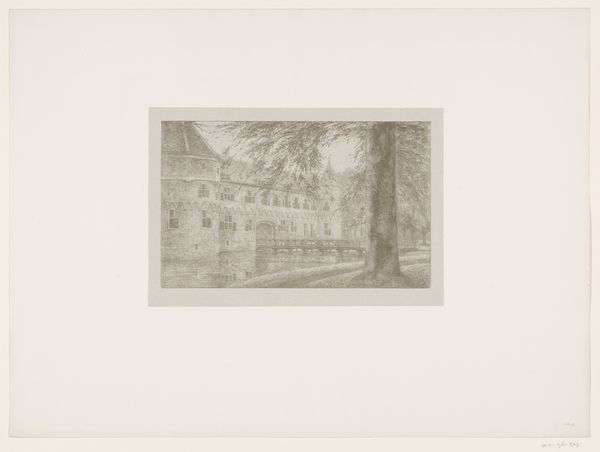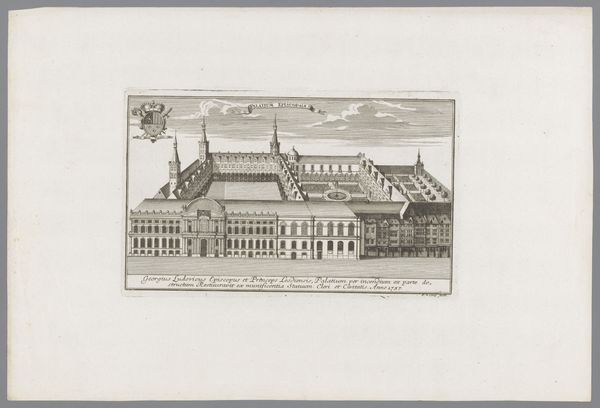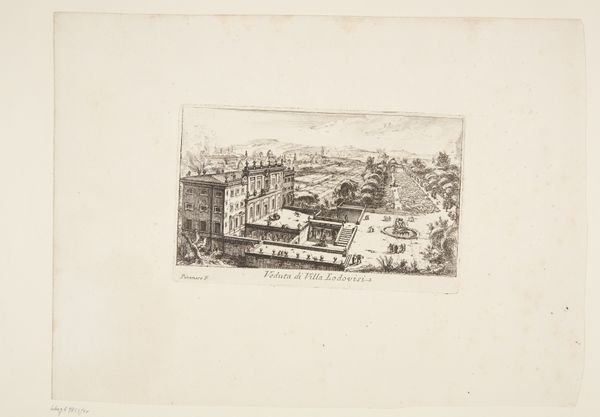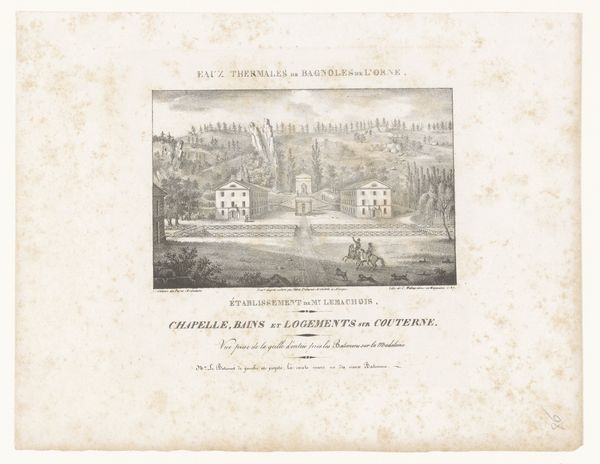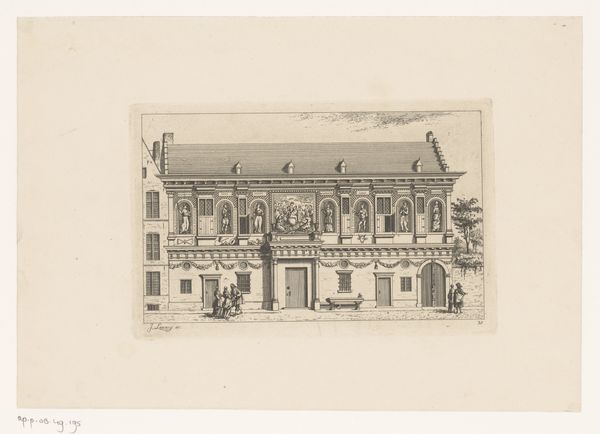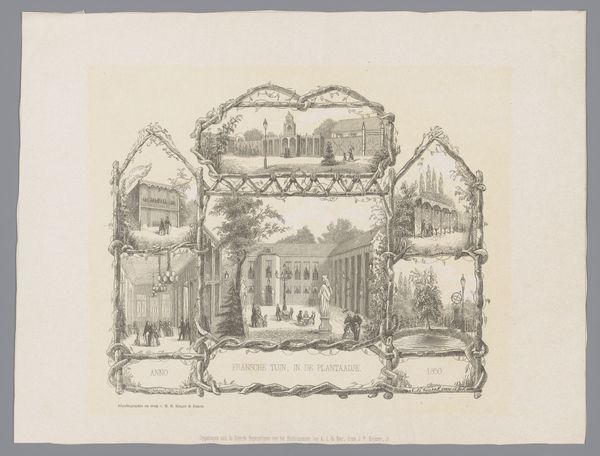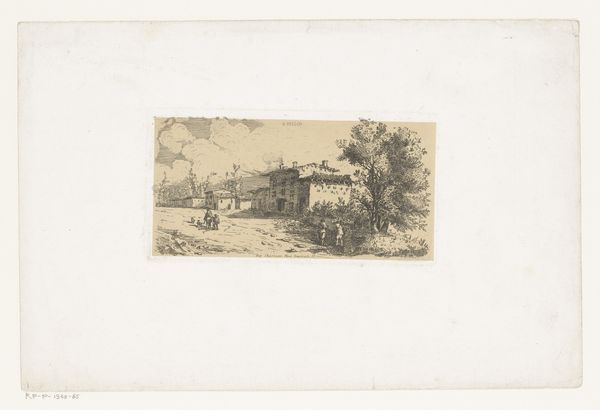
drawing, paper, ink, pencil
#
drawing
#
pencil sketch
#
landscape
#
classical-realism
#
paper
#
ink
#
pencil
#
cityscape
Dimensions: height 299 mm, width 400 mm
Copyright: Rijks Museum: Open Domain
Editor: Here we have "Ontwerp voor een titelblad met twee gezichten op een kasteel," made sometime between 1850 and 1899 by Louise Marsily, using ink and pencil on paper. It features two sketched castle views framed within an ornamental cartouche. What strikes me most is how it uses classic landscape style. How should we interpret this work? Curator: I see this drawing as an intriguing window into 19th-century European identity and power structures. It's not just a pretty picture of castles, right? Consider what castles represented: entrenched power, often built on feudal systems and inherited privilege. What does it mean to carefully render these symbols of authority during a time of massive social upheaval? Editor: So, the artist may have been trying to comment on these power structures, or maybe romanticize them? Curator: Exactly. Think about the context. This drawing was created during a period of significant political and social change, with burgeoning industrialization, and revolutionary ideas circulating. Does Marsily critique this established order or does the artist try to idealize an antiquated time? Editor: That makes me wonder who this artwork was originally for. Was it commissioned by the elite? Curator: Precisely! Thinking about the intended audience can unveil much about the work's potential function and embedded ideology. How might the reception of this image differ across different social classes or political affiliations in 19th-century Europe? Editor: Wow, I never considered how the choice of subject could hold so much meaning in a social and political context! Curator: That is a crucial aspect of analyzing art; everything from composition to artistic style intersects with broader socio-political forces. There are very few images that aren't rooted in social context. Editor: I'll definitely keep that in mind as I learn more. Thanks so much for broadening my understanding. Curator: My pleasure. Remember, art serves as a visual record of how people, at specific moments in history, negotiate the world around them.
Comments
No comments
Be the first to comment and join the conversation on the ultimate creative platform.
